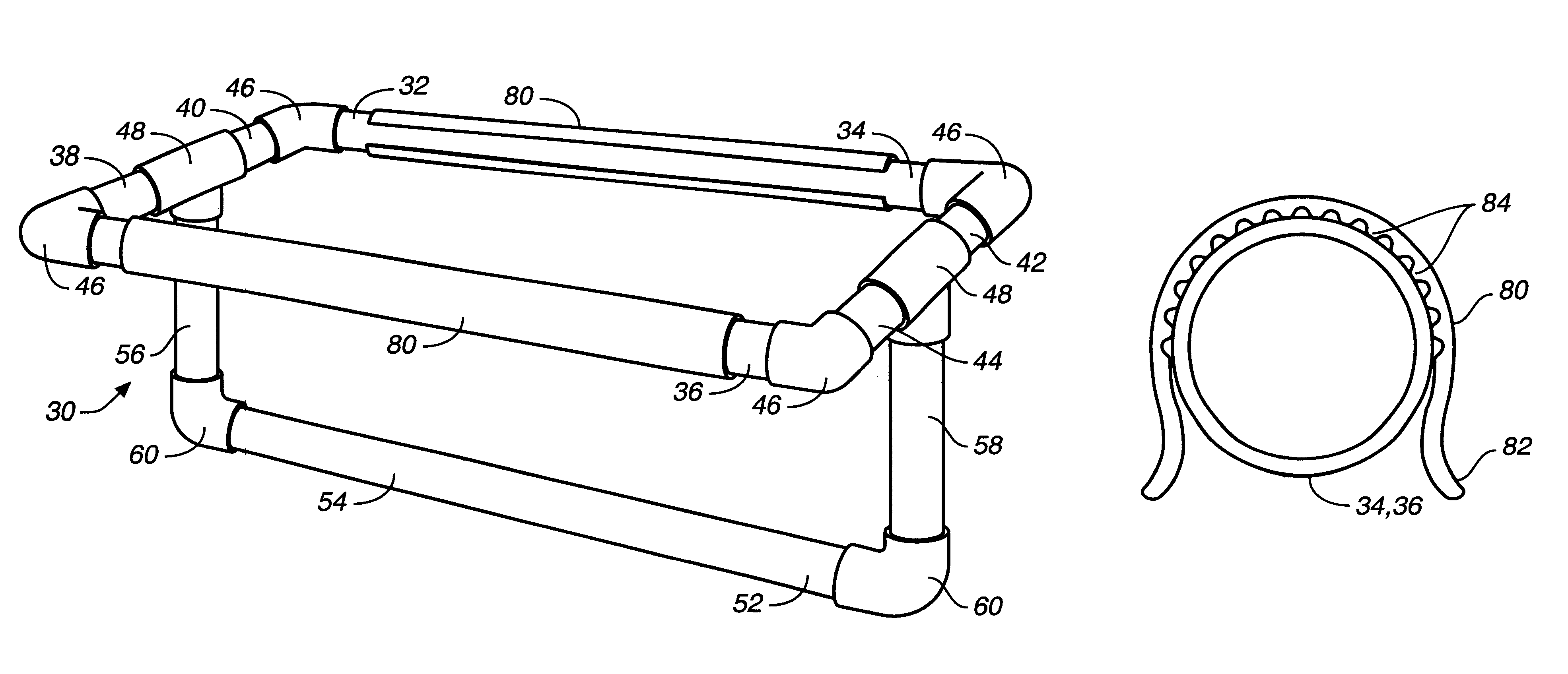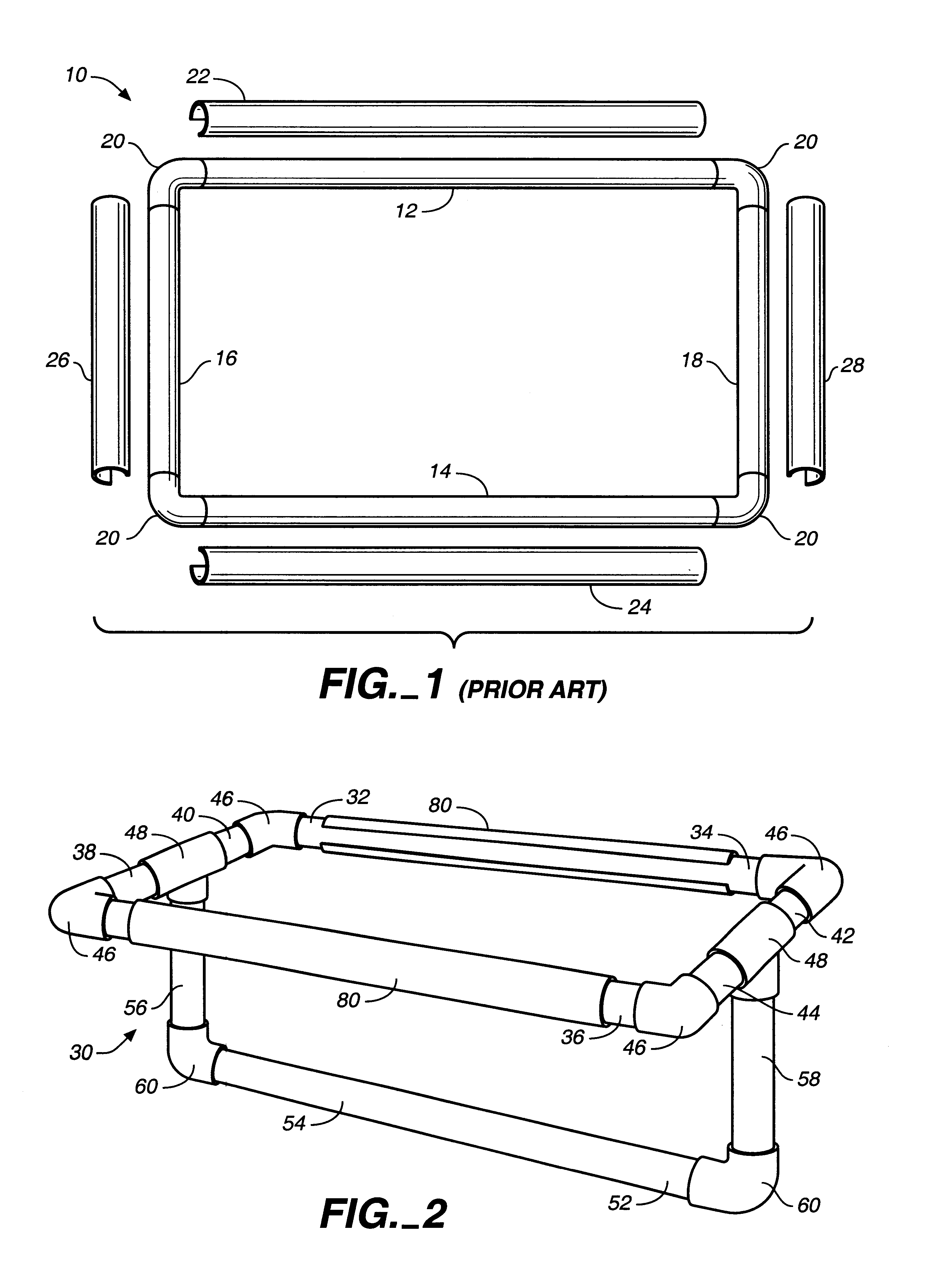Textile holding frame
- Summary
- Abstract
- Description
- Claims
- Application Information
AI Technical Summary
Benefits of technology
Problems solved by technology
Method used
Image
Examples
Embodiment Construction
Referring now to the drawings, and particularly to FIG. 1 thereof, there is shown a quilting / textile frame of the type disclosed in Kramer U.S. Pat. No. 4,658,522. The quilting frame 10 comprises lateral members 12 and 14 and side members 16 and 18 all formed from PVC tubing. Four elbows 20 also formed from PVC tubing interconnect the lateral members 12 and 14 and permanently connect the side members 16 and 18 to define a rectangular configuration. Clamping members 22, 24, 26 and 28 function to secure material to be quilted in engagement with the lateral members 12 and 14 and the side members 16 and 18, respectively. The clamping members 22, 24, 26 and 28 comprise lengths of PVC tubing which are slit lengthwise to define a C-shaped cross-sectional configuration. A further understanding of the construction and operation of that quilting frame may be had by reference to U.S. Pat. No. 4,658,522, the disclosure of which is incorporated herein by reference.
Referring now to FIG. 2, there ...
PUM
| Property | Measurement | Unit |
|---|---|---|
| Tension | aaaaa | aaaaa |
Abstract
Description
Claims
Application Information
 Login to View More
Login to View More - R&D
- Intellectual Property
- Life Sciences
- Materials
- Tech Scout
- Unparalleled Data Quality
- Higher Quality Content
- 60% Fewer Hallucinations
Browse by: Latest US Patents, China's latest patents, Technical Efficacy Thesaurus, Application Domain, Technology Topic, Popular Technical Reports.
© 2025 PatSnap. All rights reserved.Legal|Privacy policy|Modern Slavery Act Transparency Statement|Sitemap|About US| Contact US: help@patsnap.com



